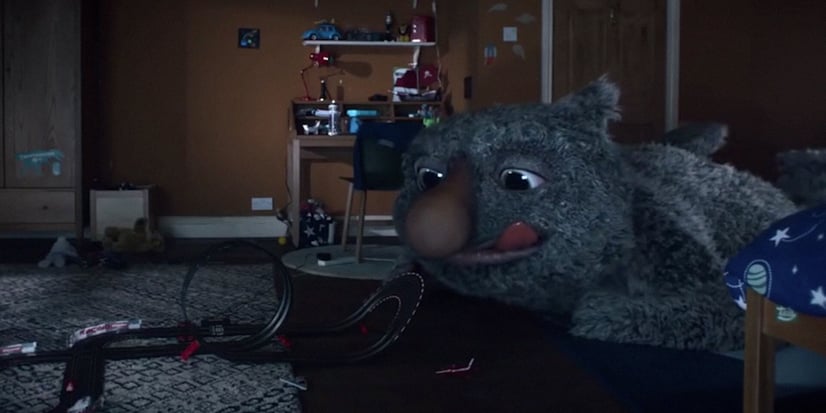
The latest batch of holiday-themed ads has arrived, officially starting the holiday season. Christmas ads are a recent but well-established tradition in the UK, with major retailers competing every year to create the most exciting, moving and talked-about mini-movie of the season. The release of major retailers’ seasonal advert has become a small event, one that newspapers widely report on and many customers anticipate. In a recent survey of UK consumers by the Advertising Association, nearly half of the interviewees reported having been moved to tears by Christmas ads they'd seen! One in six even admitted to having changed plans in order to watch the premiere of their favorite Christmas ad. John Lewis, the very chain of department stores that revolutionized the game with its 2011 Christmas ad “The long wait”, has recently released its yearly holiday ad. This latest advertisement follows the traditional John Lewis formula, featuring a little boy making friends with Moz, the noisy monster that lives under his bed. A few hours after the ad was released – and before it was even premiered on television! – the night light featured in the ad sold out on the retailer’s website, and the hashtag #MozTheMonster was the top trending topic worldwide on Twitter. After just one week, the ad had already garnered over 8 million views on YouTube alone. Although it’s still too early to analyze the economic impact of the “Moz the Monster” ad, past John Lewis ads have proved able to both engage viewers and move sales. Marketing magazine Campaign reports that John Lewis’s 2012 ad helped the retailer reach an year-on-year sales increase of 44.3 percent in the five weeks leading to Christmas – on top of helping online channel Johnlewis.com reach £800 million in sales. How does John Lewis do it, year after year? Let’s take a look at all the things this ad does right. Interestingly, all of these points are very easy to replicate.
Little emphasis on actual products for sale
Unlike traditional adverts (take the “Toys R US” Christmas commercials, which feature the company’s stores and products heavily), John Lewis’s is not obviously trying to sell you something. Although the commercial motivation of the campaign is implicit, the ad tries to minimize its connection to actual goods for sale. True, the lamp at the end of the ad (and the book the boy is reading; the sheets he is sleeping in… you get my drift) can be purchased in the department store. At the same time, the fact that all this stuff is for sale is not highlighted in the commercial: the items have no obvious branding and no price is mentioned. The very lamp that sold out so quickly even appears as if from nowhere (not having been obviously bought in a store) to bring joy.
The brand name is left to the end
The John Lewis ad, like many recent ads from big brands, neither mentions nor shows the retailer’s logo or name until the final frame. This way, the obviously commercial aim of the campaign is downplayed, giving full space to the story.
It has a heartwarming message
Emotional advertising is an old, tested technique. As a matter of fact, we find it easier to remember messages that touch our emotions. The ad celebrates the power of children’s imagination, and the importance of friendship and adventure. At the same time, it also talks of the bittersweet feeling of growing up, and leaving behind once beloved toys and pastimes. In other words, quite the emotional powerhouse. To further drive the message home, the department store teamed up with Barnardo's, the UK largest children’s charity. Sales of Moz-themed items will help raise funds for children and parents in need. The ad closes with the sentence “For gifts that brighten up their world”.
It tells a story
Storytelling is a great way to create a connection. Stories entertain us, keep us interested and stay in our memory. As AdWeek puts it, “The best and most celebrated ads have always been those that tell great stories because the best creatives know the key to winning over consumers is to share stories that are worthy of their time”. What’s more, a good story bears retelling – making it the secret to creating a viral message.
What can we learn from it?
You don’t need to have a department store chain’s budget to create a successful campaign. The points that make the John Lewis’s commercial effective can easily be replicated by any retailer, no matter the size and scope of their advertising:- Don’t feel obliged to always emphasize your brand, or that the products are for sale. The “Moz the Monster” ad manages to make people want to buy the items featured in the commercial by creating an emotional connection between the viewers and the story. Ultimately, it leaves it to the audience to make the final association – “Hey, I bet my son would love that lamp, too”.
- Focus on the atmosphere your brand suggests, rather than the brand name or logo. With this ad, John Lewis managed to associate its name to positive concepts like friendship, fun and thoughtful giving – just by virtue of the ad’s warm atmosphere.
- Tell a good story: people will remember it, and they will want to discuss it and share it with others.
- Create emotional loyalty. Make people cry, surprise them, make them laugh: by appealing to people’s emotions you can create feelings of allegiance, which are especially important in times when switching retailers is as easy as a click of your mouse.